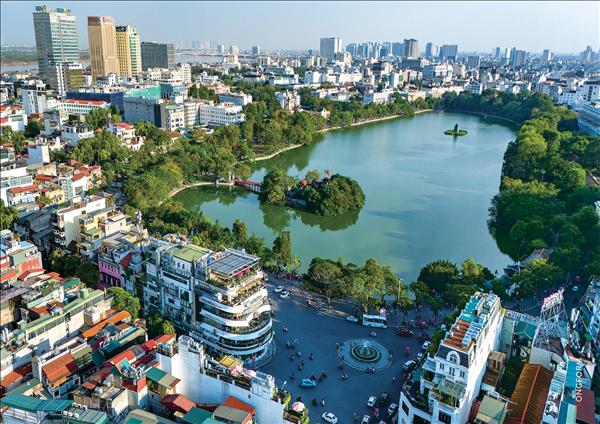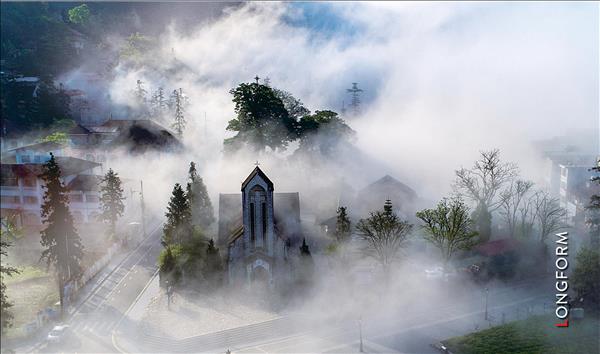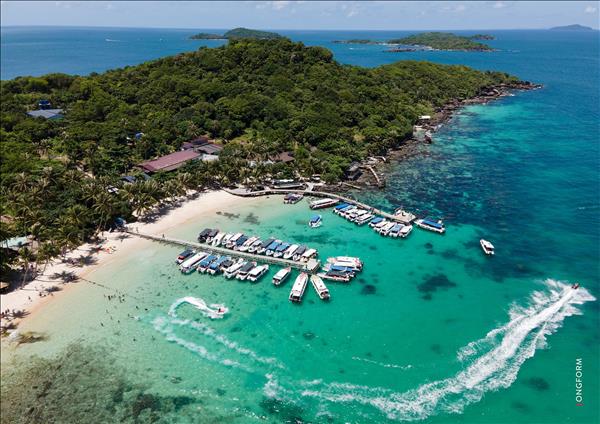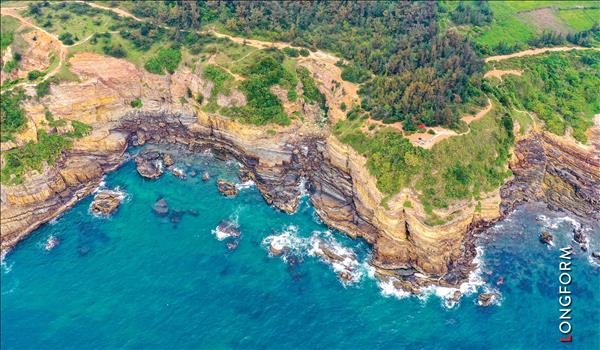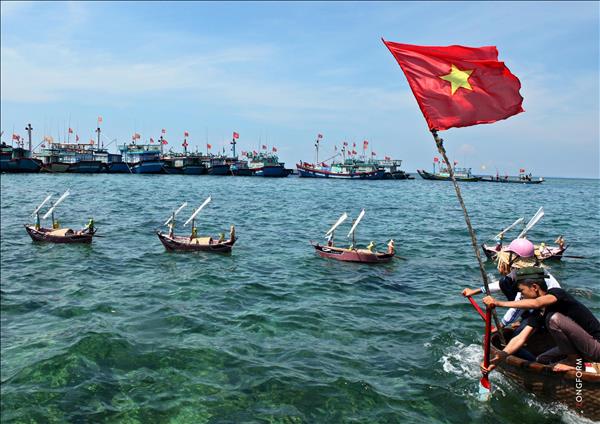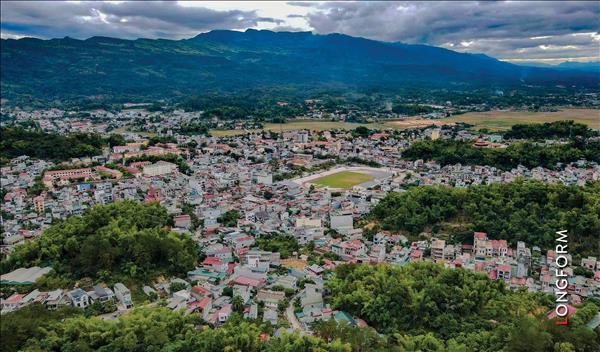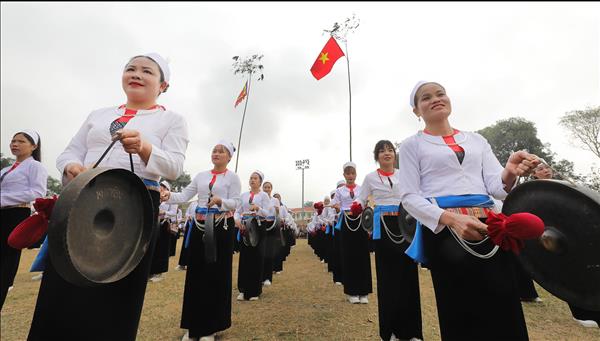The elephant is a unique cultural symbol of Tay Nguyen (the Central Highlands) and Dak Lak is considered the land of elephants in Vietnam. In the past, Tay Nguyen had large herds of elephants living in the mountains. They helped the local people in the forests and on the land and protect the villages. But now, due to deforestation and illegal elephant hunting, the elephants in Tay Nguyen are in danger of extinction.
Elephants in Dak Lak are gradually becoming extinct
In recent years, great changes in natural conditions and the multi-faceted impacts of people have decreased the area of natural forests which is the habitat of the elephants. This has directly affected the residence and ecological habits of the elephants, resulting in a rapid decline of the number of wild elephants as well as domesticated elephants over the past 34 years. According to international and local experts, elephants in Vietnam are facing the risk of extinction in the near future.
Due to illegal deforestation, the forest area has decreased, which diminishes the habitat of the elephants. In recent years, the wild elephants in Tay Nguyen leave the forests and flock to the fields to seek food, endangering the property and life of people and increasing the conflict between the people and the elephants. For instance, in 2013 a herd of 17 elephants from the forest went to an area, about 5km from the centre of Ea Sup District.
Pham Ngoc Lang, Deputy Director of the Elephant Conservation Centre in Dak Lak Province said: “In recent years, the killing of wild elephants has been on the rise. We have tried to collaborate with the local police agencies to implement preventive measures, but the illegal loggers have become increasingly sophisticated and daring.”
In recent years, great changes in natural conditions and the multi-faceted impacts of people have decreased the area of natural forests which is the habitat of the elephants. This has directly affected the residence and ecological habits of the elephants, resulting in a rapid decline of the number of wild elephants as well as domesticated elephants over the past 34 years. According to international and local experts, elephants in Vietnam are facing the risk of extinction in the near future.
Due to illegal deforestation, the forest area has decreased, which diminishes the habitat of the elephants. In recent years, the wild elephants in Tay Nguyen leave the forests and flock to the fields to seek food, endangering the property and life of people and increasing the conflict between the people and the elephants. For instance, in 2013 a herd of 17 elephants from the forest went to an area, about 5km from the centre of Ea Sup District.
Pham Ngoc Lang, Deputy Director of the Elephant Conservation Centre in Dak Lak Province said: “In recent years, the killing of wild elephants has been on the rise. We have tried to collaborate with the local police agencies to implement preventive measures, but the illegal loggers have become increasingly sophisticated and daring.”
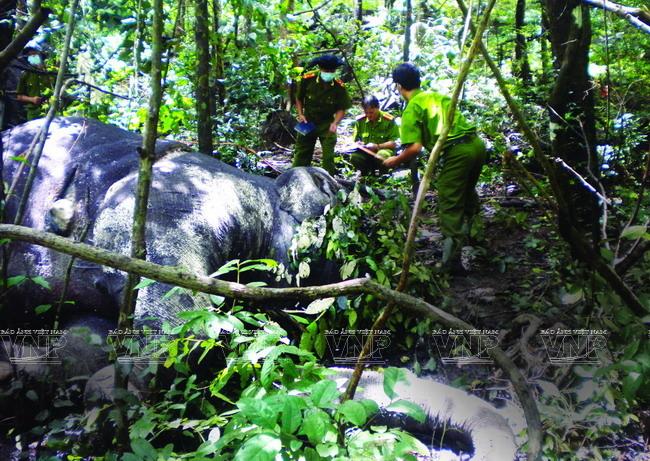 Inspecting the scene of two elephants killed in York Don National Park in August 2013. Photo: File 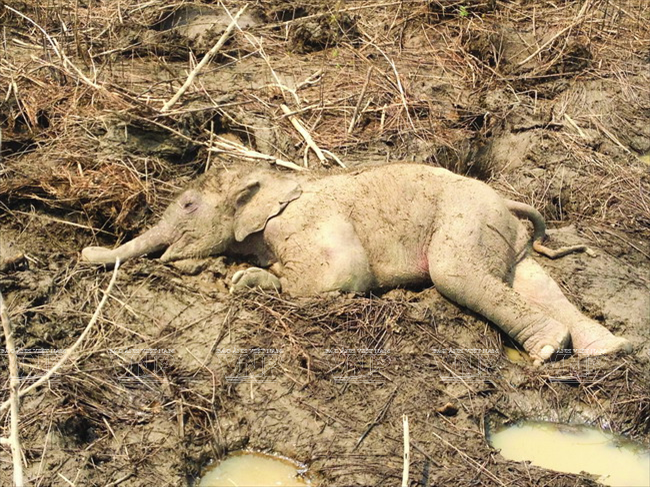 A wild elephant calf was killed in 2013 in Ea Sup District, Dak Lak Province. Photo: File 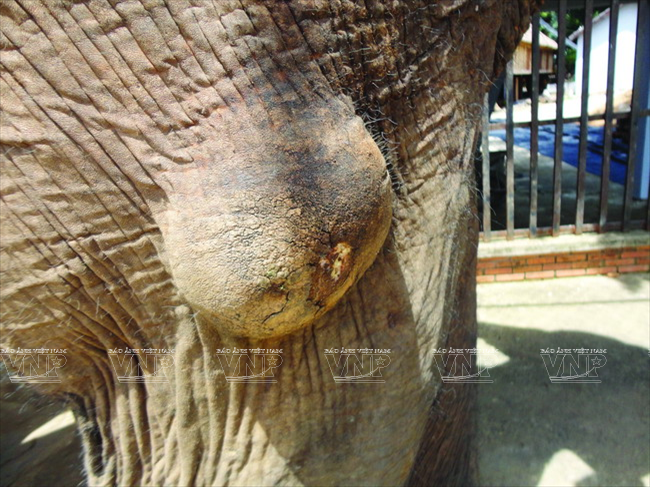 Some domesticated elephants suffer from tumors. Photo: File 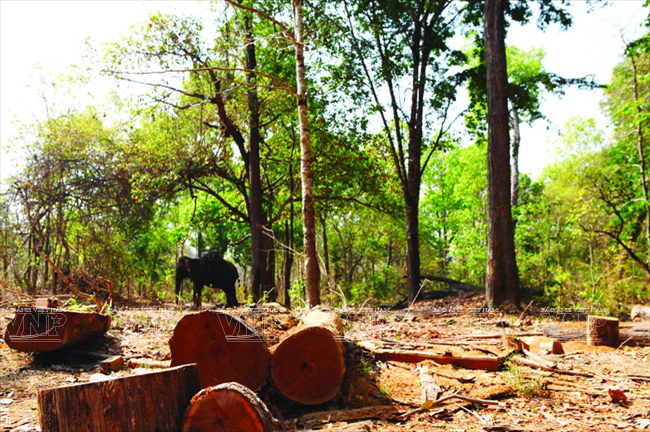 Illegal deforestation has decreased the habitat of the elephants. Photo: Tat Son  The tusks of most elephants in the Central Highlands were cut off for different reasons. Photo: Tat Son 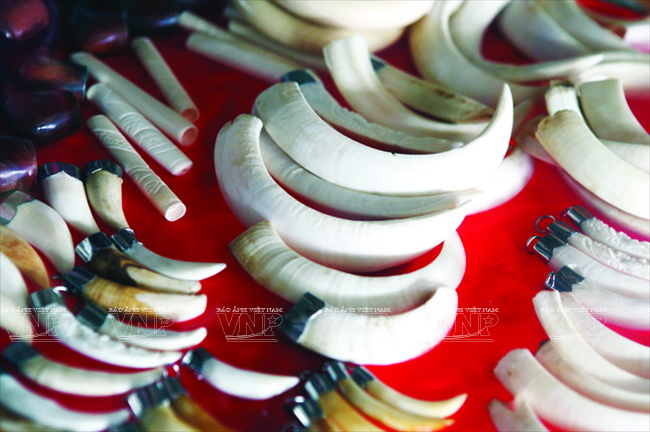 Souvenirs made from the tusks, bones and tail hair of elephants are still sold in Don Hamlet. Photo: Tat Son 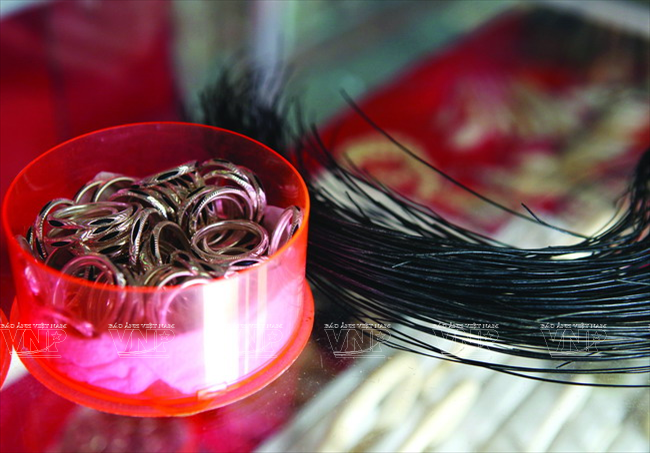 Rings made from the tail hair of elephants are sold in Don Hamlet. Photo: Tat Son  Nguyen Cong Trung, Deputy Director of the Elephant Conservation Centre in Dak Lak Province gives medical treatment to domesticated elephants in Don Hamlet. Photo: Trinh Van Bo 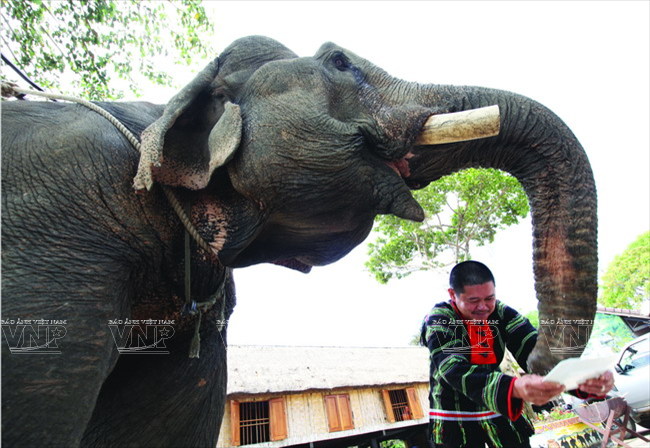 Dang Nang Long, an E De ethnic man who owns 10 of the 24 domesticated elephants in Lak District, adds salt to the food of the elephant. Photo: Tat Son 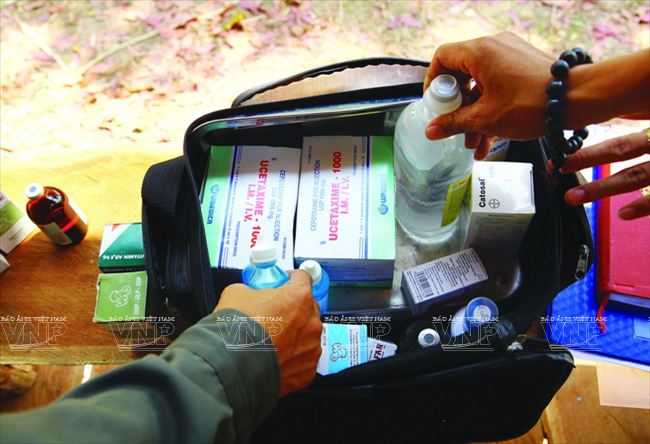 Veterinarians from the Elephant Conservation Centre in Dak Lak Province bring different kinds of medicines to treat elephants. Photo: Trinh Van Bo 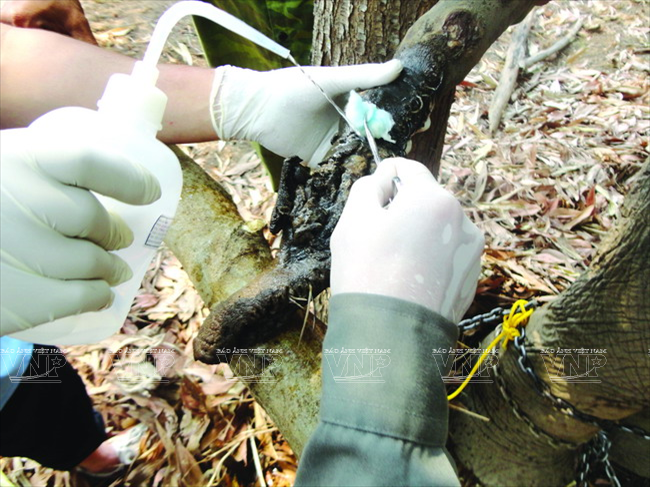 Treating an elephant which has had its tail hair cut. Photo: File 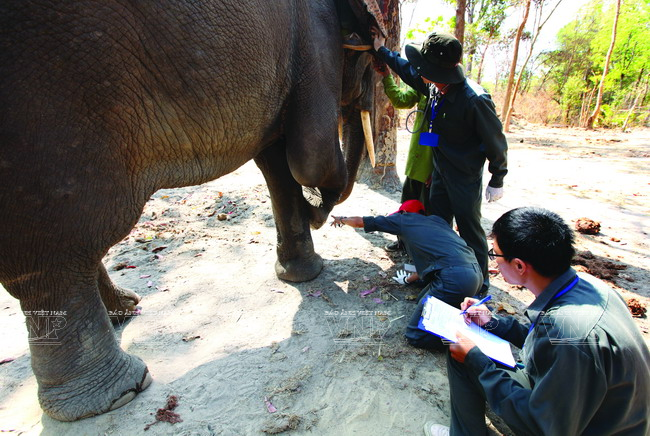 Since the Elephant Conservation Centre in Dak Lak Province was established, many domesticated elephants are regularly given medical treatment that helps preserve the elephants in the Central Highlands. Photo: Tat Son 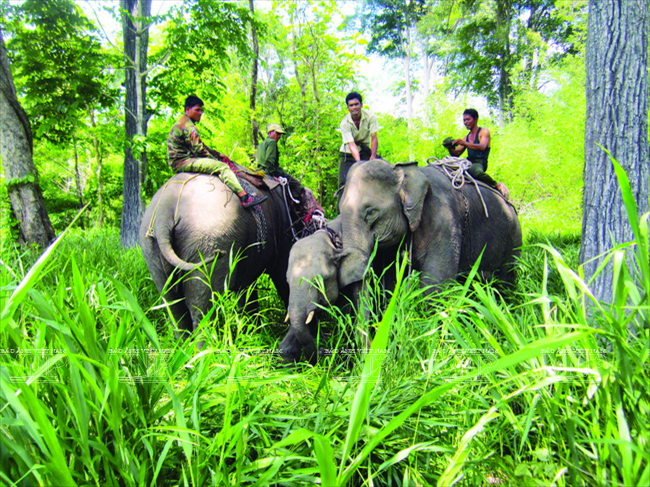 In May 2013, the Elephant Conservation Centre in Dak Lak Province coordinated with the York Don National Park to rescue a wild elephant which was trapped in a forest in the park. Photo: File |
| « According to the data by the Elephant Conservation Centre in Dak Lak Province, after over 34 years (1980-2014), the number of elephants in Dak Lak decreased by about 90%. Up to 1980, the province had a total of 502 domesticated elephants and over 2,000 wild elephants. But now there are only 52 domesticated elephants and 60-65 wild elephants. » |
According to the data by the Centre since 2009, 17 wild elephants have died and now there are about four herds of wild elephants consisting of 60-65 individuals living in the dipterocarp forests in Buon Don and Ea Sup Districts.
The hunting of elephants in Dak Lak Province in the past tended to increase. The number of elephant deaths caused by humans is increasing. Of the 17 elephants which have died since 2009, at least five elephants have died because of humans. The proof is that many parts of their bodies, such as tusks, soles and tails have been taken.
In August 2012, during a forest patrol, the Management Board of the York Don National Park discovered the bodies of two elephants, which were killed for their tusks, and collected seven bullet shells at the field. It can be seen that the hunting and killing of elephants, especially male elephants for tusks has greatly affected the structure of herds and decreased the wild elephant population. The decrease in the number of male elephants in a herd results in an imbalanced ratio between female and male elephants, leading to a severely reduced reproduction of the wild elephants.
The trafficking and consumption of elephant products, such as the tusks, bones and tail hair in the market are also complicated. This abets illegal elephant hunting.
In recent years, the illegal cutting of elephant tails has appeared. Since 2008 there have been three cases. Nguyen Cong Trung, Deputy Director of the Elephant Conservation Centre in Dak Lak Province, who is in charge of the conservation of domesticated elephants, said: “The tail hair of the elephants has the function of scaring flies, mosquitoes and insects away. Without the hair, the elephants can easily be attacked by the insects and get diseases. The cutting of the elephants’ tail for fur to make craft items for spiritual purposes will directly endanger the life of the elephants.”
Now the herd of elephants in Dak Lak consists of 53 individuals which are 18-60 years old. They are concentrated in Buon Don and Lak Districts (29 individuals in Buon Don District and 24 individuals in Lak District).
In fact, over the past 20 years, the domesticated elephants in Dak Lak Province no longer reproduced, mainly due to decreased grazing areas, lack of food and shortage of water in the dry season, which deteriorates the elephants’ health. The current separate management of the domesticated elephants also causes loss of fertility of the elephants.
According to the scientists’ research, the elephant’s estrous cycle lasts 3 months, but the ovulation takes place within only one day. So the male and female elephants must be paired for a long time and they are grazed in a nutritious and separate environment.
Protecting the elephants, an urgent job
Faced with the situation that the elephants in Dak Lak are in danger of extinction, in 2011 the Elephant Conservation Centre was established under a Decision of the Prime Minister. The center has the function of caring for the health and reproduction of the domesticated elephants, supervising the wild elephants, planning the conservation, supervision and limitation of the conflicts between the elephants and people, stabilising the habitat of the elephants and at the same time maintaining and developing the traditional cultural values relating to taming and the elephant festival.
In the initial days of its establishment, although meeting many difficulties, the centre made great efforts to overcome difficulties and successfully cured many elephants suffering from the diseases that were ineffectively treated with folk methods by their owners. The doctors of the centre provided periodical medical checkups for the elephants to avoid suffering that made the treatment more difficult.
In March 2013, the centre, in collaboration with York Don National Park, used the domesticated elephants to successfully rescue a wild elephant calf which was trapped in a forest. After 10 days of treatment of its wounds the calf was released back to the forest. This shows the efficiency of the regular patrols and supervision of the elephants’ movement corridor in Buon Don District.
During our trip to York Don National Park together with the park rangers to track the elephants’ movement we could thoroughly understand the hard work of the elephant conservation officials.
Y Mut, an Ede ethnic man, who has worked at the Management Board of York Don National Park for more than 20 years, said: “Many times, while patrolling the forests we did not see the signs left by the elephants, like the fallen branches and elephant droppings, we were very worried. We had to expand the patrol area to see if the elephants had moved into the people’s residence area. If so, it is very dangerous”.
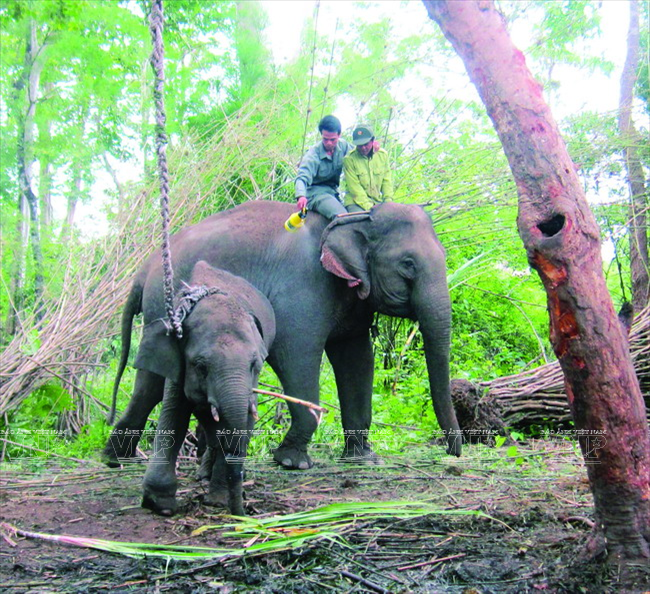 The calf which was trapped in a forest is being treated for its wounds in York Don National Park. Photo: File 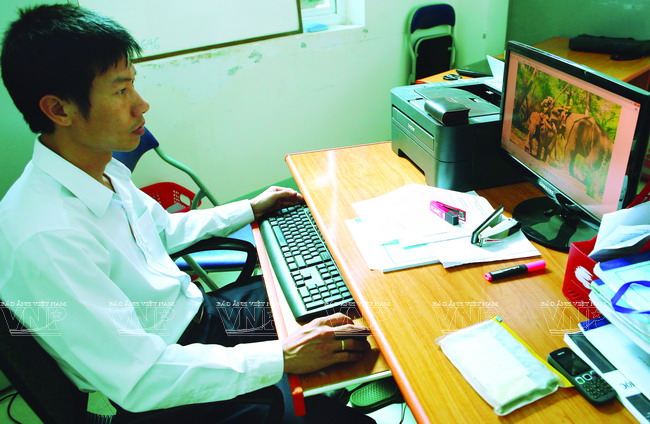 Nguyen Cong Trung, Deputy Director of the Elephant Conservation Centre in Dak Lak researches diseases which the domesticated elephants are prone to. Photo: File 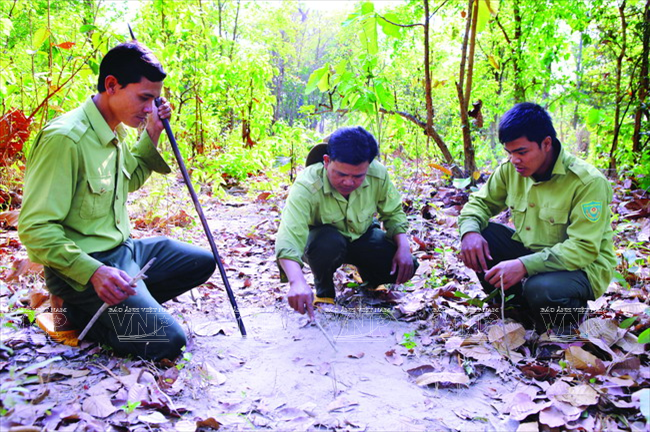 Cadres from York Don National Park track the elephants’ movement. Photo: Tat Son 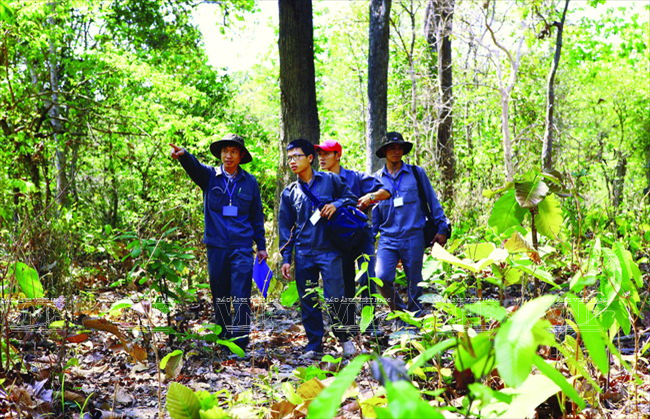 Cadres from the Elephant Conservation Centre in Dak Lak Province make a trip to track the elephants’ movement in York Don National Park. Photo: Trinh Van Bo |
In the elephant conservation projects, tracking the movement of the elephants is given top priority to avoid unnecessary conflicts between the elephants and people. The Management Board of York Don National Park in collaboration with the Elephant Conservation Centre in Dak Lak Province has established a guard team who regularly make trips to track the elephants’ movement. Thus, they can timely provide information for the local authorities to chase away the wild elephants to prevent them from damaging the fields and protect the lives and property of the people as well as protect the tame elephants.
For the tame elephants, the management board has experimentally established a grazing area in York Don National Park to raise four elephants of the park. This area has an abundant source of food, is situated in a safe place and is regularly monitored by the guard team, which helps increase the reproduction of the elephants.
In addition to the participation of the appropriate authorities to the projects, there is the support and participation of the local people.
During our stay in Lak District we met Dang Nang Long, an E De ethnic man. He owns 10 of the 24 domesticated elephants in the district. Many people know him because of his project on “helping the domesticated elephants to give birth”.
Long confided: “I was born and grew up with elephants. In 1970, my father had 12 elephants and I also witnessed the elephant’s reproduction at that time. Now in my herd of elephants there are three elephants, named Y Mam, Boc Nong and H Tuc, which are the calves of the tame elephants.”
He said, in 2005 he was aware that the herds of domesticated elephants in Dak Lak would be threatened with extinction in 20 years because the reproductive age of 53 elephants was coming to an end (the reproductive age of the elephant is 15 to 45). So, he immediately embarked on his own project with the hope that he would be successful in pairing the tame elephants to give birth.
Having two male and two female elephants in the reproductive age, he hoped his project would be successful. But after eight years with great cost in money and efforts the project was not complete. However, he was determined to continue his project. He said: “I will continue pairing the elephants until they can give birth.”
Drawing experience from the previous implementation, recently he has found an ideal location to pair the elephants for a long time with a hope that they will conceive.
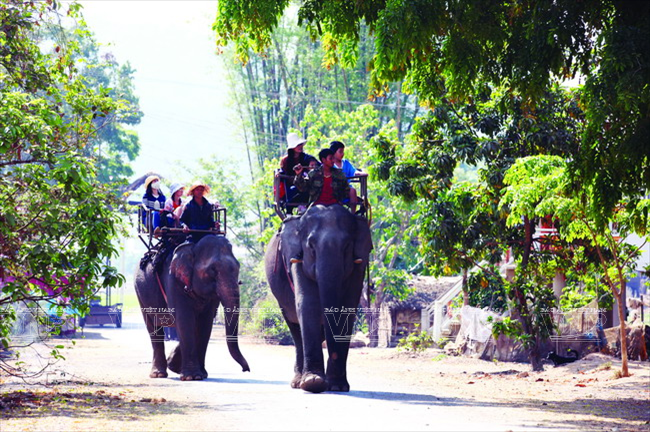 Riding elephants to tour the Don Hamlet gives tourists interesting experiences when visiting the Central Highlands. Photo: Tat Son 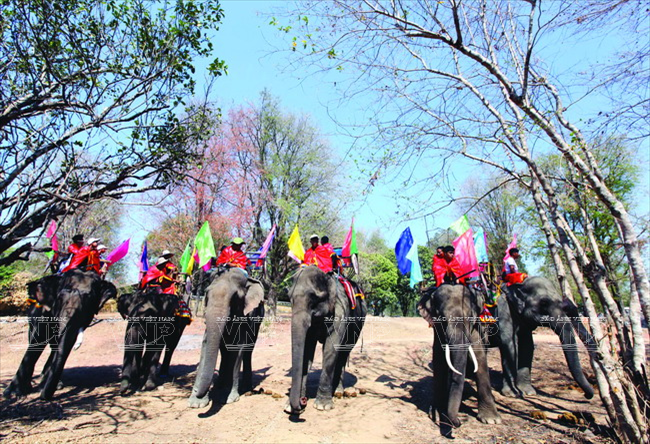 The domesticated elephants in Dak Lak participate in the elephant festival in 2014. Photo: Tat Son 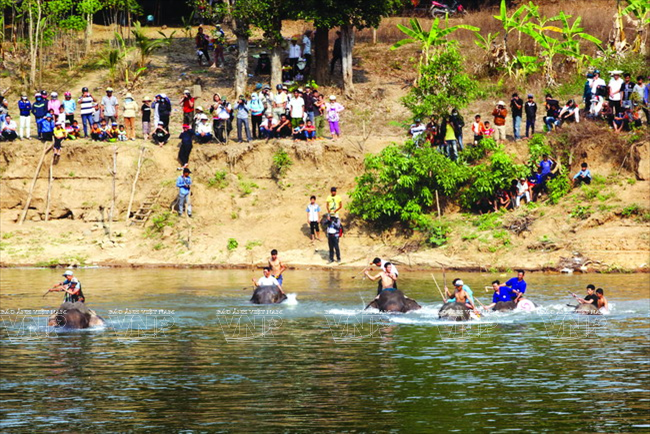 Preserving elephants means to preserve traditional cultural values in the Central Highlands. In the photo: Elephants in the swimming competition held at Tha Luong Wharf at Don Hamlet’s elephant festival in 2014. Photo: Tat Son 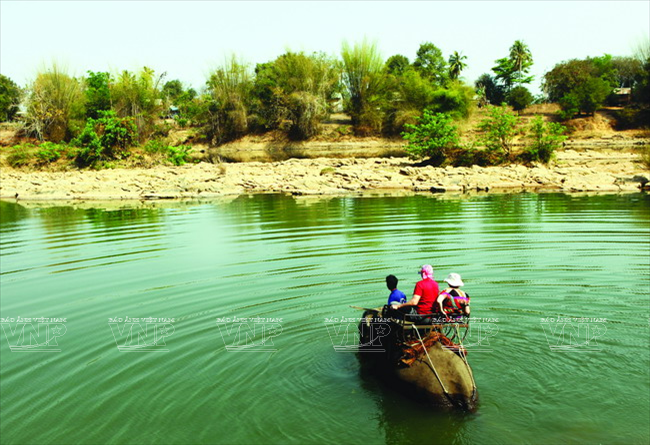 Tourists ride elephants to cross the Se Re Phoc River. Photo: Tat Son |
Besides the dream of “pairing the elephants to cub”, Long was successful in the model of economic development by travel business based on a reasonable exploitation of his tamed elephants. In 2009, he established Van Long Tourist Company near romantic Lak Lake. He said that by having the elephants, Lak District has a great opportunity to attract tourists. However, using the elephants in tourism development requires a reasonable plan and a harmonious use of the elephants’ strength.
He has divided his ten elephants into two herds to serve tourists. They work in a cycle of one day’s work and one day’s rest. The mahouts who are assigned the task of managing the elephants must give great attention to the monitoring of the health and the rutting time of the elephants. If they see the rutting signs they must let the elephants rest.
With these efforts it is hoped that the conservation and development of the elephants in Dak Lak Province in particular and in Tay Nguyen in general will achieve expected results, helping revive the past of the Central Highlands which is the traditional land of elephants.
He has divided his ten elephants into two herds to serve tourists. They work in a cycle of one day’s work and one day’s rest. The mahouts who are assigned the task of managing the elephants must give great attention to the monitoring of the health and the rutting time of the elephants. If they see the rutting signs they must let the elephants rest.
With these efforts it is hoped that the conservation and development of the elephants in Dak Lak Province in particular and in Tay Nguyen in general will achieve expected results, helping revive the past of the Central Highlands which is the traditional land of elephants.
Story: Tat Son - Photos: Tat Son, Trinh Van Bo
danghuyen

